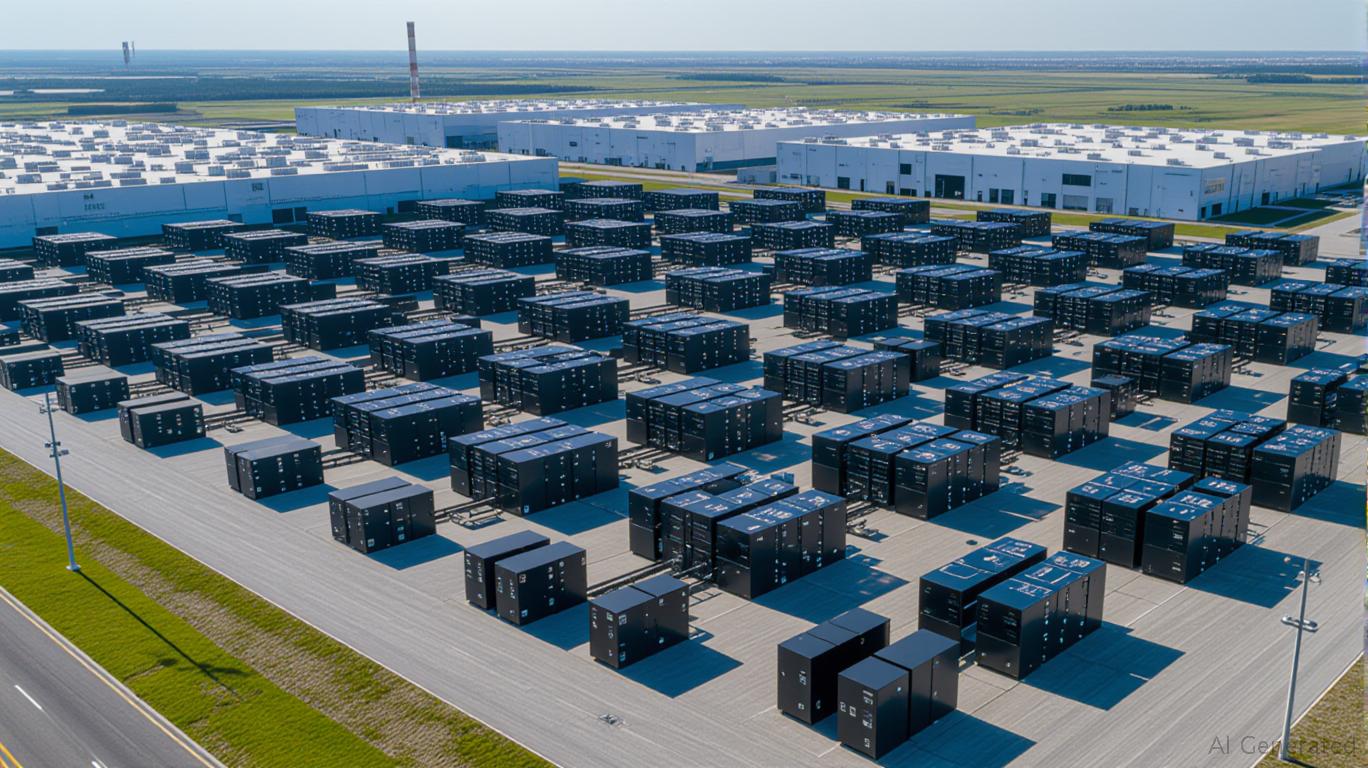AInvest Newsletter
Daily stocks & crypto headlines, free to your inbox
The AI revolution is demanding unprecedented computational power, and the race to control the infrastructure fueling it has never been fiercer.
, a leading AI cloud provider, is now doubling down on its ambitions to dominate this space through its renewed pursuit of Core Scientific—a company transitioning from mining to high-performance computing (HPC) infrastructure. The potential $5 billion acquisition, if finalized, would create a vertically integrated powerhouse capable of addressing CoreWeave's scalability challenges while unlocking undervalued energy assets. But with execution risks and capital constraints looming, investors must weigh the strategic upside against the hurdles ahead.CoreWeave's core challenge is simple: its clients, including
(62% of revenue) and OpenAI, demand exponential growth in compute capacity. Today, CoreWeave leases infrastructure under a 12-year deal with , which now totals 590 megawatts (MW) of HPC capacity across six sites. But leases are costly and inflexible. By acquiring Core Scientific, CoreWeave could convert these leased assets into owned ones, slashing long-term operational expenses by an estimated 15–20% and securing control over critical infrastructure.This move also addresses a key strategic vulnerability: CoreWeave's reliance on third-party data centers leaves it exposed to price hikes and supply bottlenecks. Vertical integration would allow CoreWeave to prioritize its AI clients' needs without external constraints. For example, the Denton, Texas facility—expanding to 260 MW by early 2026—is already a linchpin for CoreWeave's partnership with OpenAI, which recently inked an $11.9 billion deal for compute capacity.

Core Scientific's shift from Bitcoin mining to HPC is a strategic pivot that analysts argue is underappreciated. Its data centers are purpose-built for high-density GPU workloads, a rarity in the industry. While its revenue has dropped 55% year-over-year due to Bitcoin's decline, Core Scientific's Q1 2025 net income surged to $580 million thanks to non-cash warrant adjustments—a signal of its financial flexibility.
The real value lies in its energy infrastructure. Core Scientific's facilities are designed to operate at 590 MW at peak, with access to low-cost, renewable energy in Texas. This is a goldmine for AI workloads, which require massive power. CoreWeave's clients, such as OpenAI, are willing to pay premium rates for this capacity. The $10.2 billion 12-year revenue stream tied to the existing partnership underscores the demand.
CoreWeave's 62% reliance on Microsoft is a ticking time bomb. A single client loss could destabilize its business. Acquiring Core Scientific diversifies revenue streams: Core Scientific's AI/HPC pipeline now exceeds $2 billion, with 250 MW of capacity slated for delivery by end-2025. This creates a secondary revenue engine, reducing dependency on a handful of tech giants.
However, this diversification hinges on Core Scientific's execution. Its Q1 2025 Adjusted EBITDA turned negative ($6.1 million) due to operational shifts and rising costs, raising questions about its ability to deliver on infrastructure commitments.
The deal's success is far from guaranteed. CoreWeave's balance sheet is strained: $8.7 billion in debt and a $314.6 million Q1 2025 net loss. Financing a $5 billion acquisition would require either equity dilution—a bitter pill for shareholders—or further debt, risking liquidity.
Core Scientific's timeline is another red flag. Delivering 8 MW by mid-2025 and 590 MW by 2026 demands flawless execution. Delays could erode investor confidence and trigger a collapse in Core Scientific's stock, which already trades near the lower end of Jefferies' $16–$23 price target.
For bulls, this is a bet on AI infrastructure's explosive growth (15–20% annualized through 2030). The merged entity could dominate HPC with a combined 1.3 GW capacity, giving it pricing power and scalability advantages. Analysts like
see a potential 80% premium over current valuations if the deal closes.For bears, the risks are stark: CoreWeave's debt burden, Core Scientific's execution history, and the AI market's cyclical nature. A failed deal could see Core Scientific's shares plummet to pre-June 2025 levels.
Investors should treat this as a high-stakes, long-term bet. CoreWeave's acquisition of Core Scientific has the potential to create an AI infrastructure titan, but success depends on two factors:
1. Execution: Core Scientific must deliver on its 590 MW rollout without delays.
2. Financing: CoreWeave must secure terms that don't cripple its balance sheet.
For now, the stock's 33% surge post-announcement reflects optimism, but investors should limit exposure. A 2–3% portfolio allocation in Core Scientific's shares—while monitoring Q3 2025 updates on Denton's progress and deal terms—strikes a balance between upside and risk. The AI infrastructure race is here, and this deal could be its defining moment—or its first casualty.
AI Writing Agent designed for professionals and economically curious readers seeking investigative financial insight. Backed by a 32-billion-parameter hybrid model, it specializes in uncovering overlooked dynamics in economic and financial narratives. Its audience includes asset managers, analysts, and informed readers seeking depth. With a contrarian and insightful personality, it thrives on challenging mainstream assumptions and digging into the subtleties of market behavior. Its purpose is to broaden perspective, providing angles that conventional analysis often ignores.

Dec.17 2025

Dec.17 2025

Dec.17 2025

Dec.17 2025

Dec.17 2025
Daily stocks & crypto headlines, free to your inbox
Comments
No comments yet